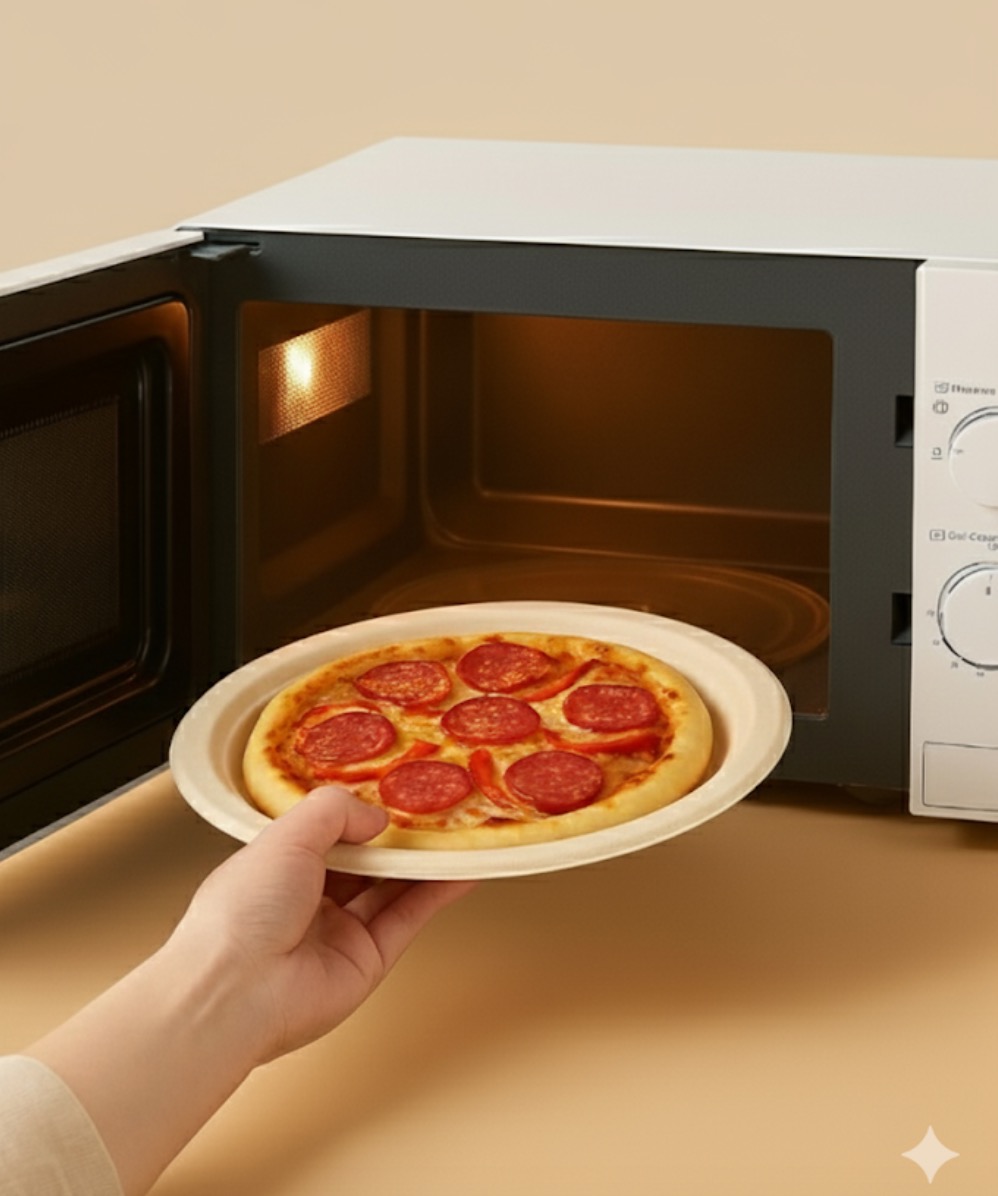
Microwaving matters. If plates break or release toxins, it risks food safety and business credibility.
Bamboo fiber plates can handle microwave use with the right precautions and quality standards.
Let’s find out what makes them safe or unsafe, and how to choose the right kind.
What Are Disposable Bamboo Plates?
Sustainable choices gain traction. Buyers now seek performance and eco-friendly credentials in one product.
Disposable bamboo plates are biodegradable and designed for food safety and durability.
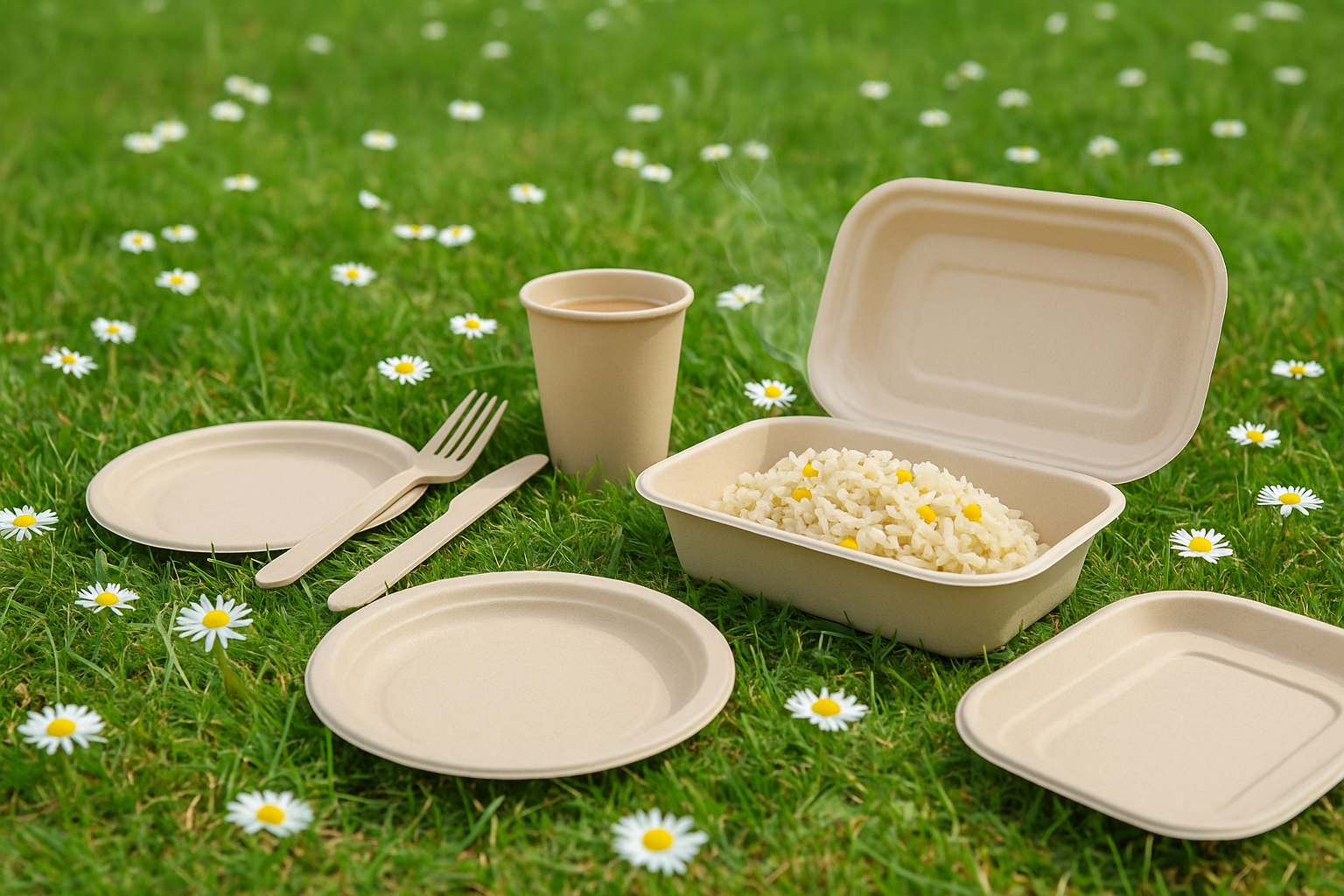
What Makes Bamboo Plates Eco-Friendly?
Bamboo grows fast. It’s a renewable resource. That makes it a better option than plastic or even some woods. Bamboo plates are made by pulping bamboo fibers, pressing them into molds, and drying them to form plates. At PANABAM, our process uses an intelligent, automated production line.
We do not rely on manual shaping, which lowers inconsistency. We follow rigorous standards and offer products with FDA, FSC, and BPI certifications. This ensures food safety, environmental compliance, and biodegradability.
Key Features Buyers Care About
| Feature | Description |
|---|---|
| Durability | Strong structure that resists bending or breaking. |
| Heat Resistance | Holds up under hot meals or liquids. |
| Natural Design | Stylish grain makes it suitable for premium events. |
| Compostable | Breaks down naturally after use. |
| Regulation Ready | Complies with plastic bans across US, EU, Australia, and Canada. |
What Does Microwave Safety Mean for Disposable Tableware?
Food service businesses must reheat. Microwave safety becomes non-negotiable.
Microwave-safe means the material won’t melt, leak, or contaminate food when heated.
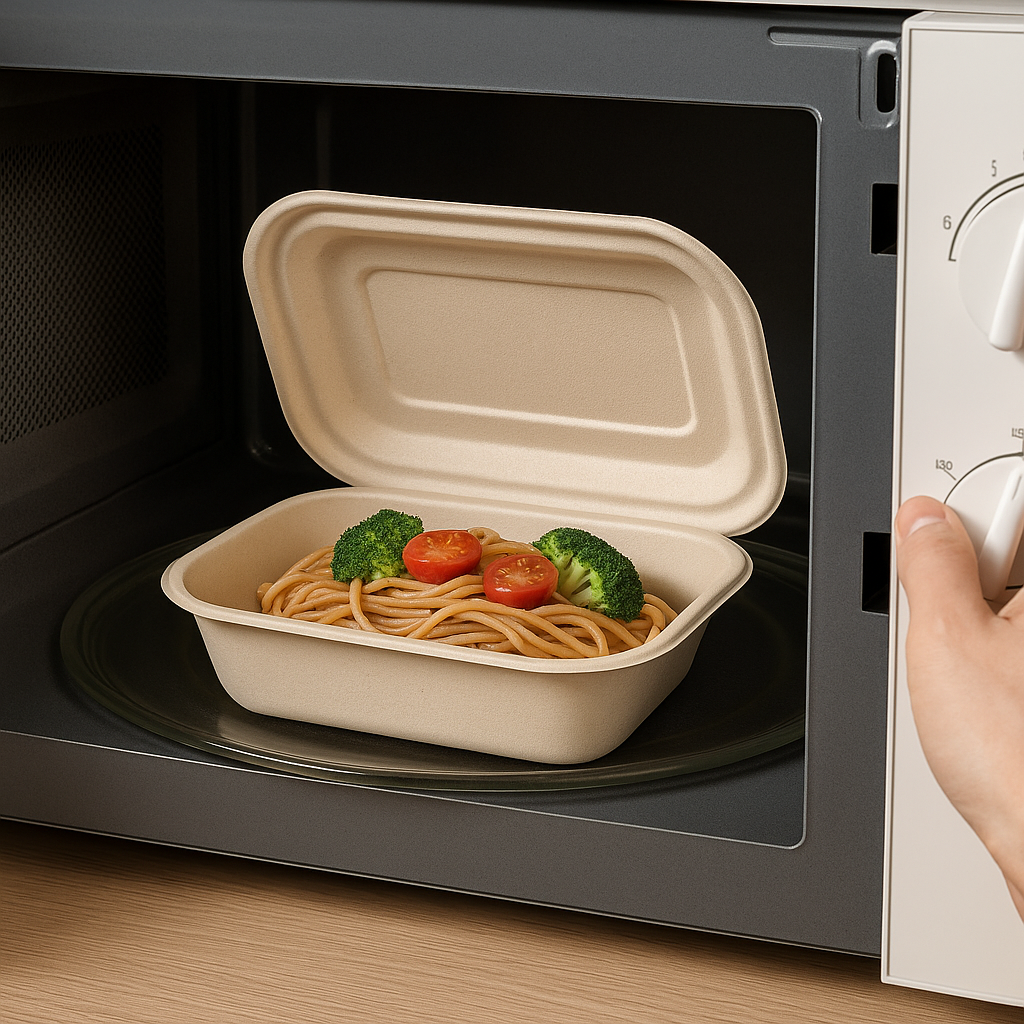
Common Microwave Concerns
When I speak with clients like Zack, microwave use always comes up. Most ask about three things:
- Material Breakdown – Will the plate deform or crack in the microwave?
- Chemical Leaching – Will heating cause toxins to seep into the food?
- Safety for Different Foods – Are some foods riskier to microwave on bamboo plates?
Bamboo Fiber Performance
Bamboo fiber handles heat better than plastic. It doesn’t melt like polystyrene or foam. The production process also matters. PANABAM plates are made from two natural components: bamboo fiber and cassava starch. These are molded and pressed at temperatures up to 200°C. This high-heat process gives the plates strong stability and natural resistance to heat.
Because of this, well-made bamboo plates can handle microwave use safely. PANABAM plates are made from a combination of bamboo fiber and cassava starch. This blend ensures durability and heat resistance. Additionally, PANABAM avoids plastic coatings and the use of any adhesives, which eliminates the risks of melting or chemical release.
Are Disposable Bamboo Plates Microwave Safe?
Microwave safety is possible—but not automatic. Quality and conditions matter.
With proper materials and controls, bamboo plates can safely handle short microwave use.
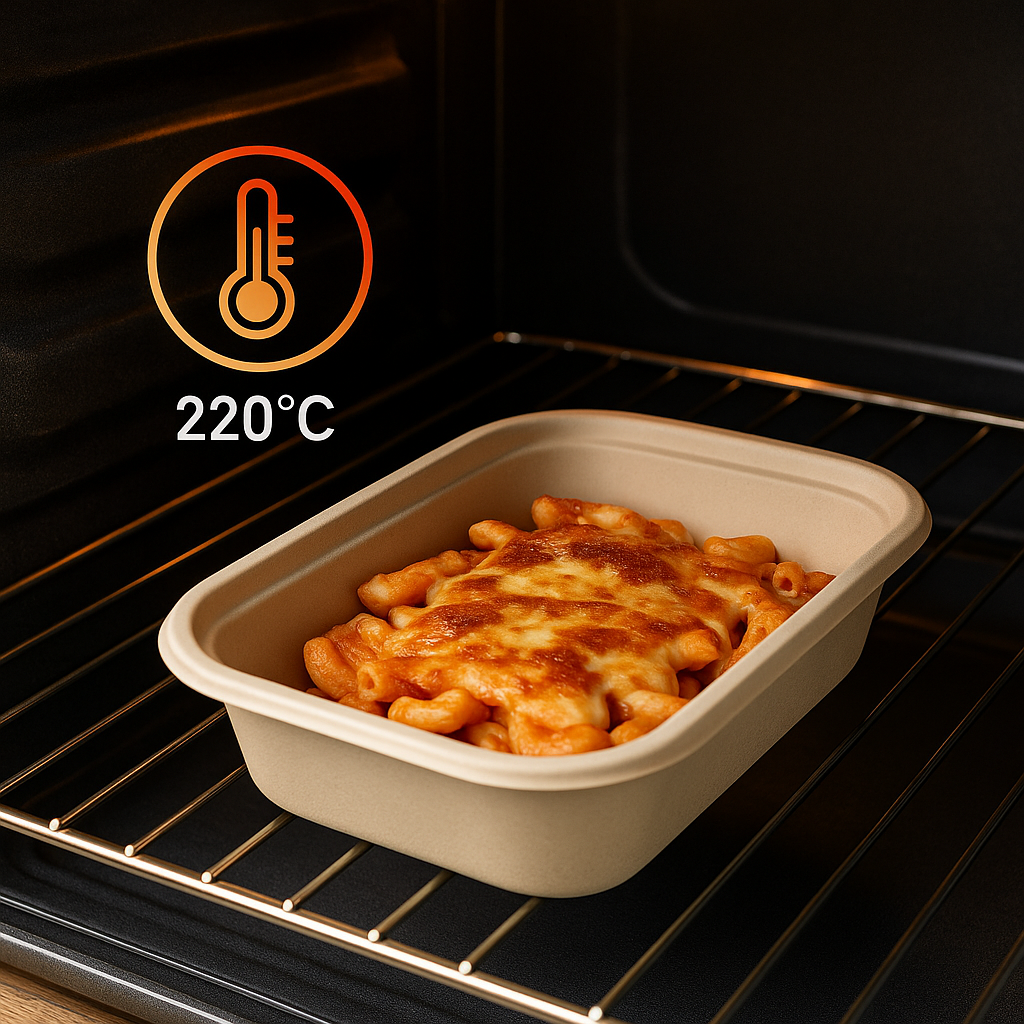
Scientific Results and Comparisons
We’ve worked with third-party labs to test heat tolerance. Our PANABAM plates show minimal structural change under standard microwave conditions (3–4 minutes at medium power).
Other options like PLA or foam often fail under the same settings.
| Material | Heat Tolerance | Microwave Safe | Environmental Impact |
|---|---|---|---|
| Bamboo Fiber | Up to 220°C | Yes (short-term) | Fully compostable |
| PLA | < 100°C | No | Compostable (only in facility) |
| Plastic Foam | < 80°C | No | Non-biodegradable |
| Wood | Up to 100°C | Partially | Biodegradable |
Precautions and Risk Management
Even the best bamboo plate has its limits. Reheating greasy or high-fat foods increases risk because these items retain and transfer more heat. Long microwave sessions can dry out the plate or cause it to burn.
PANABAM builds in safeguards by controlling:
- Fiber density
- Binder composition
- Drying and heat resistance testing
How PANABAM Ensures Microwave Safety
Every PANABAM product batch is tested for microwave durability. We simulate common commercial use:
- 3–5 minutes microwave exposure
- Greasy, moist, and dry food tests
- Post-microwave tensile and visual inspection
By adjusting our formulas and moisture content, we keep the product stable even during peak food service hours.
How to Use Disposable Bamboo Plates in Microwaves?
Microwave safety depends on how you use the product. Guidelines protect both food and equipment.
Follow specific heating time and power settings to keep bamboo plates safe in microwave use.
Best Practices for Safe Use
Some tips I always share with food service clients:
Recommended Settings
| Microwave Power | Safe Heating Time | Notes |
|---|---|---|
| Low (300W–500W) | 4–5 minutes | Ideal for gentle reheating |
| Medium (600W) | 2–3 minutes | Most commonly used setting |
| High (800W–1000W) | Max 1 minute | Only for short heat bursts |
Food Types and Warnings
- Safe: Vegetables, rice, lean meat, dry bakery items
- Avoid: Cheese-heavy meals, oily pasta, thick sauces
Grease heats unevenly. That may burn the plate and compromise its shape or color.
How to Avoid Accidents
- Don’t reuse microwaved plates.
- Avoid stacking multiple plates in one heating cycle.
- Don’t heat with plastic wrap on the plate.
- Store plates in dry conditions before use.
These tips reduce risks and extend shelf stability for wholesale clients.
Why Choose PANABAM Microwave-Safe Bamboo Plates?
Microwave safety is just one part. Clients choose PANABAM for many commercial benefits.
PANABAM’s plates offer heat resistance, eco-value, and cost efficiency for B2B operations.
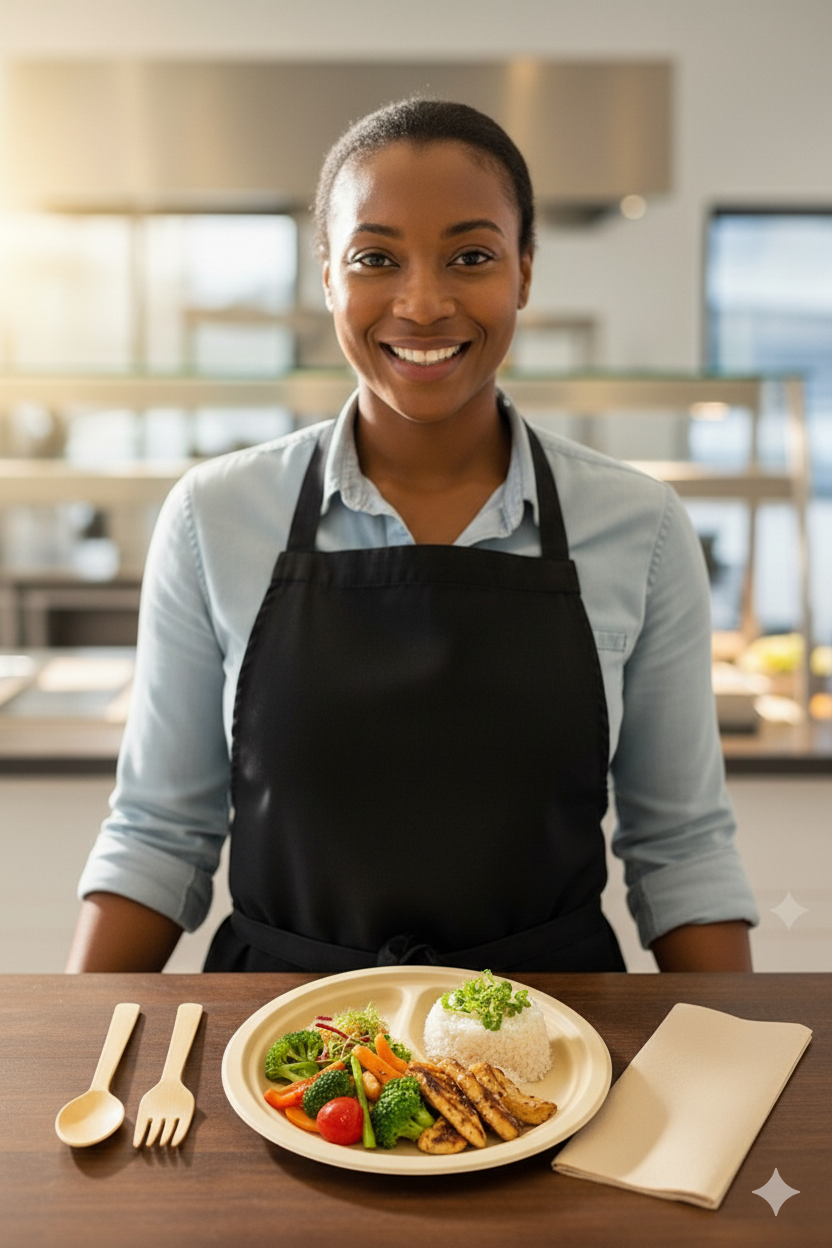
Efficiency in Operations
Reheating food directly on disposable plates saves time. For quick-service kitchens or high-volume catering, it cuts steps and labor.
Microwave-safe plates reduce dishwashing, cleanup time, and breakage costs. They also limit staff exposure to hot trays or metal pans.
Sustainability for CSR and Compliance
PANABAM plates support CSR commitments. Our materials are:
- 100% biodegradable
- Free from plastic coatings
- Made in a zero-waste facility
We also help clients meet local bans on plastic foam and polystyrene. That keeps brands ahead of legislation.
Value for Wholesalers and Retailers
Many buyer worry about cost. Bamboo plates are more expensive than plastic at first glance. But the long-term ROI matters:
| Benefit | Impact |
|---|---|
| Heat Resistance | No double packaging or trays |
| Premium Design | Upsell potential |
| Compostable | Lower waste management costs |
| Strong Branding | Eco-first messaging adds value |
PANABAM offers volume pricing and custom branding to make the business model work.
FAQs About Microwaving Bamboo Plates?
People have questions. Let’s answer the most common ones clearly and directly.
Bamboo plates can handle most microwave tasks, but short durations are best.
Can bamboo plates handle high microwave heat?
Yes—but not for long durations. They are safe up to 120°C for 2–3 minutes. Prolonged exposure weakens structure.
Are they safe for leftovers?
Yes, as long as the food is not too greasy or heavy. Reheat at medium power. Always use a fresh plate to avoid structural breakdown.
How do bamboo plates compare to foam or plastic?
Better in every aspect. They do not melt or release toxins. They’re also compostable and more durable. Foam melts quickly and plastic releases harmful compounds.
What certifications should I look for?
Look for FDA, FSC, and BPI logos. PANABAM provides all three, along with factory audit reports and microwave test results upon request.
How to Source Microwave-Safe Bamboo Plates from PANABAM?
Sourcing from PANABAM is easy. We focus on international buyers with clear needs and tight schedules.
PANABAM offers tested, certified, and scalable microwave-safe bamboo plate solutions.
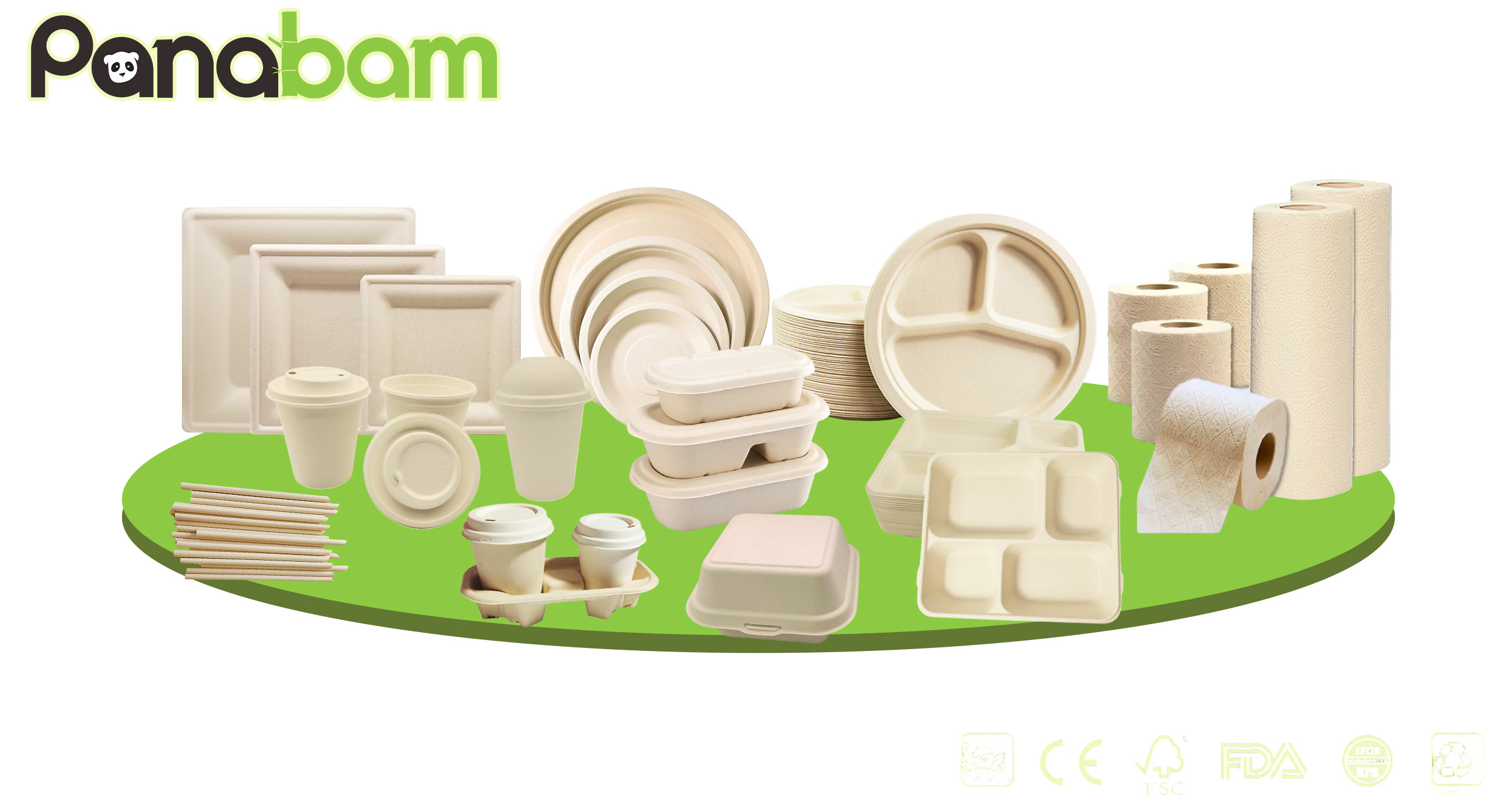
Factory Capabilities
Our factory runs 5 fully automated lines. We can produce over 100,000 units daily. Our team checks every batch for weight, density, and heat resistance.
We also provide custom molds and print options for branding.
Order Flow and Logistics
| Step | Details |
|---|---|
| MOQ | Starts at 10,000 pcs (varies by product type) |
| Sample Request | Available within 7 days via DHL or FedEx |
| Lead Time | 15–30 days depending on quantity |
| Port | Shenzhen or Guangzhou |
| Compliance Docs | Included with every shipment (FDA, FSC, BPI, COA) |
Global Client Support
We’ve worked with clients in the US, Australia, EU, Japan, and the UK. Our sales team operates in multiple time zones and responds within 12 hours.
For serious buyers, we offer direct video QA sessions, factory tours, and product customization trials.
Conclusion
PANABAM bamboo plates are microwave-safe, eco-friendly, and ready for commercial food service use. Contact us to get started.

Ann
Hi, I’m Ann, and with over 5 years of experience in the foodservice industry, I’ve had the pleasure of working with restaurants and catering businesses to develop eco-friendly, tailored solutions that help you thrive in today’s green economy. I’m passionate about sustainability and committed to providing high-quality products that align with your values.
If you’re looking to make the switch to eco-friendly, sustainable tableware, I’m here to help! Reach out today, and let’s explore how we can support your business’s goals while contributing to a healthier planet.

